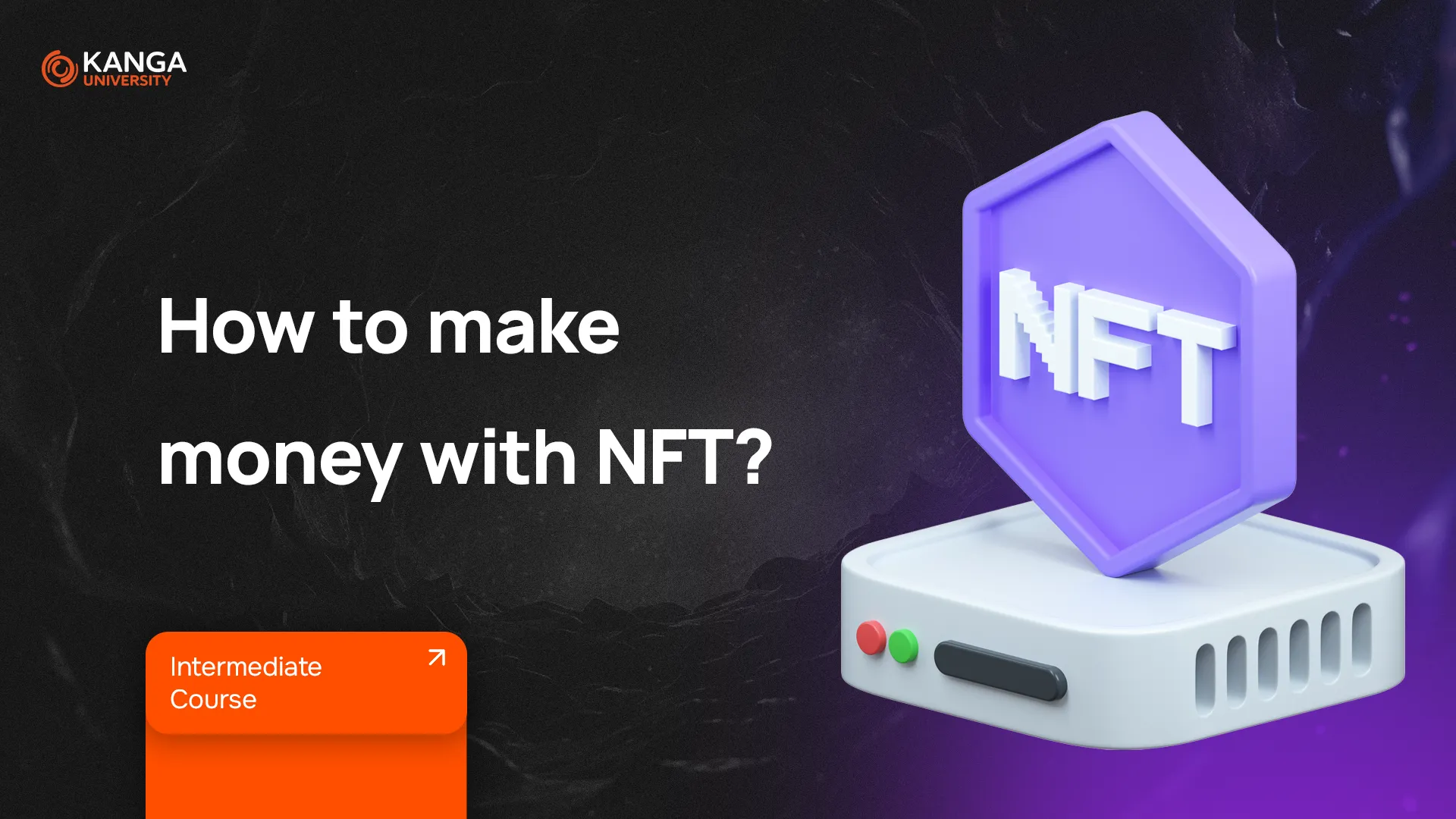
NFTs, or Non-Fungible Tokens, have gained massive popularity in recent years. Some investors have made spectacular profits by investing in these digital assets, while major brands and celebrities are increasingly engaging with this market.
NFTs have been around for several years, but their real explosion happened during the 2020 pandemic. That was when celebrities started turning their photos into NFTs, and artists began digitalizing their work into tokenized assets. Collectors were willing to pay millions of dollars for digital artwork, music, and other forms of digital content.
In this lesson, we will explain exactly what NFTs are, how you can profit from them, and what applications they have across different industries.
What Are NFTs and Why Are They Unique?
NFTs are not cryptocurrencies. They are unique, indivisible digital tokens that confirm the authenticity of a specific asset.
What makes them special:
- They are immutable – Once recorded on the blockchain, they cannot be edited or forged.
- They are unique – Each NFT has a distinct identifier, making it different from any other token.
- They can represent various assets – Artwork, music, in-game items, event tickets.
Because of these features, NFTs have become attractive to artists, investors, and businesses.
How Are NFTs Used?
NFTs serve multiple functions across different industries. Their value is not just in digital collectibles – they are often used to grant access to exclusive services, content, or events.
- Art and collectibles – Artists can sell their work as NFTs while earning royalties on every resale.
- Music and films – Creators can monetize their work by selling it as NFTs without intermediaries
- Fashion and luxury goods – Brands like Gucci and Louis Vuitton offer digital versions of their products as NFTs.
- Gaming and Metaverse – NFTs allow for trading virtual items, characters, and real estate.
- Tickets and VIP access – Concert and event organizers increasingly sell tickets as NFTs to prevent counterfeiting.
How to Make Money with NFTs
There is no single best way to invest in NFTs. The market is still young and rapidly evolving. Here are several strategies for making money with NFTs:
- NFT Airdrops – Some projects distribute free NFTs to users who meet certain conditions, such as signing up for a platform
- NFT Staking – Earn passive income by locking NFTs on DeFi platforms to receive rewards
- NFT Rentals – Some platforms allow users to rent out NFTs for use in games or Metaverse applications, generating regular income
- Royalty Fees – Artists and creators can earn a percentage of every resale of their NFT
- Flipping NFTs – Buying NFTs at a low price and selling them later for a profit when their value increases
- Play-to-Earn Games – Some blockchain games allow players to earn, trade, and cash out NFTs for real money
- Ownership Rights – Certain NFTs give holders rights to real-world assets, such as shares in artworks or real estate
The NFT market is dynamic, and the effectiveness of these methods depends on emerging trends and specific projects. Keeping up with new developments and adjusting strategies is crucial.
NFTs in Celebrity Culture and Fashion
NFTs have become a valuable tool for celebrities and fashion designers. Here are a few examples:
- Paris Hilton sold an NFT of her cat
- Lindsay Lohan turned her music video into an NFT
- Snoop Dogg offered NFTs that granted access to meet him in person
- Doda split her digital avatar into 400 pieces, selling them as NFTs
- Gucci created virtual sneakers available only as NFTs
- Louis Vuitton integrated NFTs into its advertising campaign, collaborating with artist Beeple
Luxury brands and designers increasingly use NFTs to engage with customers and offer exclusive digital products.
How Are NFTs Connected to the Metaverse?
The Metaverse – virtual worlds where users can interact, work, and play – is one of the most promising spaces for NFTs.
- Users can buy and sell virtual real estate in the form of NFTs
- Companies host virtual concerts and events, where tickets are sold as NFTs
- Many blockchain-based games use NFTs for in-game economies and player-owned assets
As the Metaverse expands, demand for NFTs will increase because they enable true ownership of digital assets within these virtual spaces.
Summary
NFTs offer multiple opportunities for making money and are used across various industries, from art to gaming. You can:
- Create your own NFTs and earn royalties
- Invest in promising projects and flip NFTs for profit
- Participate in Play-to-Earn gaming for passive income
- Explore new NFT applications in the Metaverse
The market is continuously growing and evolving, presenting more opportunities for users and investors. As the Metaverse expands, NFTs will play an even more significant role in the digital economy.
Test your knowledge on Kanga Exchange